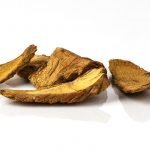Treating Autoimmune Diseases: A Functional Approach for Practitioners
Tolle Totum
Holly Lucille, ND, RN
If you have patients with an autoimmune condition, it’s not surprising. According to the National Institute of Environmental Health Sciences (NIEHS), a division of the National Institutes of Health, autoimmune diseases affect over 23 million Americans.1 Other estimates push this number to over 50 million, because while there at least 80 different autoimmune-related diseases and conditions, only a fraction of them have been identified and studied enough to warrant inclusion in the NIH statistics.2
One of the reasons autoimmune diseases are such a struggle for patients and so difficult to treat is that causal factors are hard to pin down, and discerning which aspect of the immune system is overreacting can be a challenge.
The Immune System: An Overview
To begin with, everyone has, in a sense, 2 immune systems: the innate immune system and the adaptive, or specialized, immune system (sometimes called the acquired immune system). Also, autoimmune issues can present themselves as either systemic conditions, like multiple sclerosis, or as fairly localized problems, like psoriasis.
The innate immune system is everything that an individual is born with that protects them: the skin, saliva, mucous membranes, and stomach acid, to name a few. These factors prevent viruses or bacteria, for example, from getting a foothold in the body. Within this innate immune system are phagocytes, neutrophils, and natural killer cells that attack dangerous threats and render them harmless.
The adaptive, or acquired, immune system defends the body based on experience. It includes B-cells, T-cells, antibodies, and white blood cells that recognize invaders that have survived the innate immune system. The specialized immune system either bolsters the body’s immune response or destroys infected cells so that they are removed from the body altogether. When a person has had a cold or specific strain of flu, for instance, their body develops immunity to that specific bacteria or virus.3
Key Players
Some of the key players of the adaptive immune system key players include the following:
- Lymphocytes are white blood cells that originate in the bone marrow. Lymphocytes come in 2 forms: B-cells and T-cells. B-cells release from the bone marrow into the bloodstream or congregate in clusters within the tonsils and stomach lining. T-cells, while formed from the same basic pattern as B-cells, “mature” in the thymus gland rather than the bone marrow.
Within the T-cell family are helper T-cells, cytotoxic T-cells, and suppressor T-cells:
- Helper T-cells are the most abundant of the T-cells. They stimulate B-cells and other T-cells into action, and they bolster the body’s immune response
- Cytotoxic T-cells attach to invading bacteria, viruses, or toxins, puncture those threatening cells, and release enzymes that destroy them and any harmful substances
- Suppressor T-cells constitute a natural “brake” on the actions of the immune defenses, ensuring that they don’t take their jobs too far by attacking healthy cells. However, if they are too few in number, they can’t intervene when the immune system mistakes “self” for “not self.”4
Other components of the adaptive immune system include the thymus and the spleen. The thymus could be described as a community for T-lymphocytes, where they develop and multiply.5 The spleen filters blood, makes lymphocytes, and destroys spent blood cells. At its center, the spleen contains both B-cells and T-cells, although their numbers decline with age.5
The threats in a typical immune scenario – eg, viruses, bacteria, allergens – are called antigens. The white blood cells in the adaptive immune system have to figure out how to match each different kind of antigen they encounter with an antibody. It has to be an exact match to bind to the antigen and help other white blood cells destroy it or to be able to destroy it outright on its own.5
Like parallel lanes on an expressway, the lymphatic system mirrors the cardiovascular system. Throughout this system, lymph nodes (which are also attached to blood vessels and nerves) act as “car washes,” filtering out bacteria and other threatening material, to be devoured by macrophages. The freshly cleaned lymph fluid is now free to pass back into the bloodstream and fight infections.5
Autoimmunity Risk Factors & Triggers
The potential risk factors and triggers for autoimmune diseases are plentiful. However, one of the most significant causes of increased production of autoantibodies (ie, T-cell actions against the body’s own structures) is exposure to environmental toxins.
Autoantibodies (most commonly antinuclear antibodies, or ANAs) have many possible antecedents, such as age, family or genetic predispositions, and the interplay between hormones and overall health, including parity.6,7 For example, women are more likely to develop autoimmune diseases than men.7
NIEHS researchers reports that autoantibodies can develop for years before actually attacking tissues.8 They reexamined data collected during the National Health and Nutrition Survey from 1999 to 2004, with an eye toward uncovering more about the mechanisms and correlations of autoimmune diseases. None of these findings are necessarily surprising to practitioners, or to their patients either, I’d imagine. Nonetheless, they reported that some potential triggers and correlations that included the following1,8:
- Solvent exposure – eg, proximity to paint thinners, cleaning supplies, and nail polish – contributes to the development of systemic sclerosis
- Smoking contributes to the development of 2 types of rheumatoid arthritis
- Having children – especially more than 1 – contributes to ANA prevalence
- Workers exposed to fine particles of crystalline silica – found in quartz, granite, and many other minerals – are prone to developing several autoimmune diseases. Anyone in mining, construction, or other building work is clearly at risk.
- Gluten consumption contributes to the development of celiac disease in genetically susceptible individuals. (Practitioners, of course, have been aware of this for some time.)
Reactions to drugs or bacterial or viral infections also put people at risk. The Epstein-Barr virus is frequently identified as a triggering mechanism for immune system hypervigilance. However, any factor that stimulates an extreme immune system response may make it difficult to restore proper balance.
Whatever the cause, the very tissues and systems that form part of the innate immune system, including the skin and digestive tract, can become victims of attack by the adaptive immune system. You’ve probably treated patients dealing with pain, swelling, and stiffness in their joints, skin rashes, inflammatory bowel diseases, or thyroid disruptions – all are results of immune system hypervigilance.9
Another challenge to practitioners is that the signs and symptoms of autoimmune diseases can be so varied and so interconnected with coexisting conditions that it can be difficult to narrow down an effective treatment plan. In my experience, patients with underlying immunomodulation disorders have commonly suffered through multiple issues, including:
- Joint pain or muscle pain, accompanied by weakness or tremors
- Unintentional weight loss or weight gain
- Insomnia
- Intolerance to heat or cold
- Rapid heartbeat
- Recurrent rashes or hives or sun sensitivity
- Brain fog, difficulty concentrating or focusing
- Abdominal pain, bloody stools, or diarrhea
- White patches or ulcers in and around the mouth
- Dry eyes, mouth, or skin
- Numbness or tingling in hands or feet
- Multiple miscarriages or blood clots
This may seem like a daunting list of symptoms, and it is; many of them can appear in the same patient in what seem like completely unrelated problems. Someone suffering from joint pain, for example, may also be dealing with brain fog, or rapid heartbeat, or extreme sensitivities to light, temperature, and foods. It’s an incredibly complex puzzle.
Common Diagnoses
Aside from the challenge of unraveling the causes of symptoms of autoimmune conditions, diseases themselves can also often appear in tandem within the same patient.
For example, Hashimoto’s or Graves’ disease are 2 sides of the same thyroid-related coin, but both are also commonly associated with additional autoimmune conditions such as Addison’s disease, celiac disease, systemic lupus erythematosus (SLE), type 1 diabetes, and rheumatoid arthritis (RA).10 Patients with Hashimoto’s present with low energy, brain fog, and slowed metabolism as the immune system attacks the thyroid gland and prevents it from making sufficient thyroid hormones. Hashimoto’s is quite prevalent, affecting about 5 in every 100 individuals10; it’s also at least 8 times more common in women than in men.10
Graves’ disease ramps up thyroid activity in the other direction, toward hyperthyroidism. In this case, while the thyroid is under attack, thyroid hormone production is boosted to unhealthy levels. Aside from its associations with RA, pernicious anemia, SLE, and celiac, Graves’ disease can create rapid, irregular heartbeat, susceptibility to osteoporosis, and light sensitivity and other vision problems.11
SLE causes skin rashes, inflames the joints, damages cartilage, and attacks the blood vessel linings. While the Epstein-Barr virus can be a contributing factor,12 it is interesting to note that lupus has become 10 times more prevalent in Western countries in the past 50 years than before, and is more prevalent in those who have moved to Western countries from Asia and Africa, even though they may not be historically at as much risk.12
There are plenty of reasons for this increased incidence of SLE, but as a practitioner I can’t help wonder if refined-grain and sugar-laden diets, genetic modification, and the nutritionally valueless processing of foods – especially in the past half-century – are major contributors.
RA, which inflames and degrades joints throughout the body, can promote depression, fatigue, anemia, blood vessel damage, and dry eyes and mouth. Like several other autoimmune conditions, your patients with RA are more likely to be women than men7 and are likely to be battling 1 or more secondary autoimmune disease. The results of a cross-sectional study, published in the journal Advances in Therapy, found that the likelihood of individuals with RA having at least 1 other autoimmune condition was double compared to those with osteoarthritis, the most prevalent comorbidities being SLE and psoriatic arthritis.13
There is some research showing correlation – causation is still being debated – about a gut bacterium, Prevotella copri, being overexpressed in patients with new-onset RA.14 The presence of the microbe appears to trigger immunoglobulins A and G. Thus, a probiotic protocol may be in order for patients with RA and other autoimmune conditions.14
Other work has found that RA shares a biomarker for cancer – the oncoprotein survivin. A case-controlled, population-based study, published in the journal Medicine, detected the oncoprotein in over 50% of patients with RA, as compared with just under 6% of controls.15
In multiple sclerosis (MS), damage to the myelin sheath of nerve cells is only the beginning of its destructive path. As this autoimmune disease progresses, it wears down effective communication to muscle groups, sends shock-like signals along the spinal column, and can weaken bladder control and vision. About 80% of individuals with the disease have relapsing-remitting MS, with periods that are essentially free of symptoms. The causes of MS vary, but can include various environmental conditions, Epstein-Barr virus exposure, genetic inheritance, and low serum vitamin D levels. Because MS typically affects people further away from the equator16 and vitamin D levels tend to be low in individuals with MS,17 boosting vitamin D levels, as part of a comprehensive protocol, may provide some relief for your patients.
The fact that all of these disparate diseases are often related isn’t really a surprise, as the same inflammatory pathways are shared by many, if not most, of these conditions.18,19
Conventional Treatments: Short-term & Shortfalls
For the very reason that autoimmune conditions share so many similar traits, it is common to see the same conventional medications used for many of them. Unfortunately, many of these medications come with a load of side effects, and are ultimately not long-term solutions.
For example, patients looking for relief from inflammatory bowel diseases are most likely only going to get short-term benefits from conventional drugs, whether or not they experience side effects. One review found that tumor-necrosis factor (TNF) antagonists are not at all effective for about 10-30% of patients right off, and that up to 46% of patients – almost half – lose responsiveness to anti-TNF medication over time.20 Moreover, RA patients taking anti-TNF medications are at an increased risk of infection,21 so here again, conventional drugs can only do so much, and have the potential to cause great harm.
Naturopathic Treatments
As naturopathic practitioners, we have workable options for our patients who have tried conventional routes and found them wanting. And I’m willing to bet that they align with treatment protocols that you’ve recommended for other conditions as well.
To begin with, a whole-patient approach requires a whole-body treatment to balance patients’ immune responses. And as I’ve mentioned, many of these recommendations apply to almost any health condition.
Get restorative sleep. Healthy sleep may not solve everything, but it definitely comes close. I recommend that patients stop screen time within an hour of going to bed (no TV, smartphones, or laptops), watch caffeine intake during the day (effects of caffeine can linger for up to 8 hours), and get into the habit of creating a “ritual” to anchor bedtime and rest – ie, make getting ready for sleep a daily habit rather than just something to lapse into or do between busy days of intensive, stressful effort. Which brings me to the next point…
Actively reduce stress. Stress is so pervasive – and we unfortunately allow it to be so – that patients with autoimmune concerns (or any health concern, really) need to actively reduce stress. That can mean encouraging them to reconsider what they focus their minds on during the day. Do they ruminate over potential problems? Dwell on the past? Is an ongoing monologue of negative self-talk happening? To help them work past this and develop more resilience, encourage them to consider yoga, qigong, and/or meditation. Yoga, at a variety of skill levels and physical intensity, has become fairly ubiquitous. Qigong, which combines slow body movements and mindful breathing, could be described as moving meditation.
For those with autoimmune conditions and other immune system imbalances, qigong may be especially helpful. One study showed a statistically significant positive effect of qigong on immune cells and immune response after only 1 month of daily qigong training.22
Other research has investigated meditation’s role in reducing inflammatory states. Work at the University of Wisconsin found that healthy, experienced meditators (vs healthy, age-matched non-meditators) showed a lower neurological inflammation response to an irritant.23 Long-term meditation has also been found to boost a sense of well-being.23
Avoid all possible exposure to environmental toxins, such as chemicals, mercury, and other heavy metals. This ideally includes eating organic foods whenever possible, as well as patients being vigilant about their home spaces and what kinds of chemicals and toxins they allow in. It may be helpful for your patients to think of their living space in the same way that people dealing with allergens do – eg, filtering air, closing windows on days when air quality is especially dodgy, and using non-toxic furnishings.
Toxins can start wreaking havoc very early in life: a study conducted in 2002 showed that children on an organic diet, compared to children eating a conventional diet, had significantly less urinary output of organophosphorus pesticide metabolites.24 It is never too late to start; eating organic food is one of the best first steps to ridding the body of immune-compromising chemicals.
Avoid taking unnecessary drugs. As practitioners, I suspect we’re persistently coaching patients away from the sense that over-the-counter medications are harmless. Encouraging patients to reduce their intake of conventional drugs will only work when they are presented with viable alternatives. The immune system is strengthened best by whole-body-and-mind healthfulness, as opposed to “patching it over” with synthetic chemicals that work along 1 pathway for temporary symptom relief while simultaneously damaging other pathways of great value.
Dietary Interventions
There are indisputable connections between diet and mind and body health. Inflammatory foods make everything worse. Yet inflammatory foods are sadly prevalent in the American diet. If your patients overindulge in refined grains and sugars, vegetable oils high in omega-6 fatty acids, cured meats, and/or deep-fried foods, their immune systems will be thrown into red alert. Encouraging the addition of healthy foods, rather than simply banning “bad” foods, may have a longer-lasting impact. At its best, you can help spark a new hobby of cooking and preparing meals at home with fresh ingredients, including:
- Cold-water fish
- Non-cured meats
- Olive oil and butter (no hydrogenated fats, such as margarine)
- Non-starchy fresh vegetables, including peppers, spinach, kale, sweet potatoes, broccoli, carrots, and radishes, to name a few
- Green tea
- Spices, including garlic, curries, basil, and oregano
- Fruits, including blueberries, apples, raspberries, and grapes
- Almonds, walnuts, cashews
- Dark chocolate
I recommend that patients shop the outer aisles of the store first, where the produce and unprocessed whole foods are located, with only occasional trips to the inside aisles for other ingredients.
The addition of anthocyanins from increased consumption of fruits and vegetables alone may make a positive difference. A cross-sectional analysis of the Framingham Heart Study found that anthocyanins (in pears, apples, strawberries, red wine) reduced 12 different inflammatory biomarkers in population of American adults.25 The researchers reported that individuals with the highest consumption levels of these healthy compounds had a 73% lower overall inflammation score compared to those in the lowest consumption groups.25
Supplemental Nutrients
Of course, interventions with clinically validated nutrients should be part of any practical treatment plan. Matched with an anti-inflammatory diet and other lifestyle measures, several clinically studied supplements are particularly effective…
Curcumin
Curcumin from turmeric (Curcuma longa) has been shown to reduce pain and inflammation in patients with RA26 and may also be helpful in MS.27
Conventional drugs used in RA are often only a short-term solution because they can cause cardiovascular, renal, and/or liver damage.28
Pain relief is certainly a major consideration in RA treatment. I recommend curcumin because it offers relief and reduces inflammation without negatively affecting immune function or other bodily systems.
One randomized clinical study, published in Phytotherapy Research, showed how effective curcumin can be compared to prescription medication.26 In this study, 3 groups of volunteers diagnosed with RA (functional class I or II) received either diclofenac sodium (50 mg twice daily), curcumin (500 mg twice daily), or both diclofenac sodium and curcumin. According to the Disease Activity Score 28 (DAS 28) assessment, the curcumin-only group showed the best results for reducing joint pain, swelling, and other disease symptoms; this was followed by the combination therapy of curcumin with diclofenac sodium. Taking the curcumin with the drug was no more effective than taking the botanical alone, and taking the drug alone was the least effective approach. The curcumin-only group showed reductions in both C-reactive protein (a measure of chronic inflammation) and anti-streptococcal antibody titers (which are associated with severity of RA activity). In both curcumin groups, there were no dropouts due to adverse effects; however, in the diclofenac sodium-only group, 14% of subjects withdrew due to adverse effects.26
Other research examining the effects of curcumin on a human astrocyte cell line found that the botanical not only reduced the release of the inflammatory cytokine, interleukin (IL)-6, and the activity of the enzyme, MMP-9; it also appeared to induce astrocyte glial cells to respond to inflammation in the central nervous system and to help repair signal connections otherwise damaged in multiple sclerosis.27 The fact that IL-6 concentrations are increased in synovial fibroblasts in patients with RA29 suggests a natural autoimmune application of this natural medicine.
Curcumin may also relieve inflammatory bowel disease (IBD). In a small clinical study, 5 patients with ulcerative proctitis and Crohn’s disease received curcumin daily.30 The patients with proctitis were also taking prescription medications; however, by the end of the 2-month study period, 2 participants were able to stop taking one of their prescriptions altogether (including prednisone), and 2 others had reduced their dosages. Inflammation markers returned to normal. Four of the 5 patients with Crohn’s disease who completed the study showed significant improvement, including less-frequent bowel movements, less pain and cramping, and better-formed stools.30
Because standard extracts of curcumin can be notoriously difficult to absorb at therapeutically effective levels, I typically recommend a curcumin blended with turmeric essential oil that enhances its ability to absorb and remain at clinically effective blood levels. This also improves patient compliance, since patients don’t need to take as much.
Vitamin D
Vitamin D is such a common nutrient that it is almost in danger of being overlooked as a treatment option. Vitamin D helps regulate the innate immune system, and reinforces epithelial cells’ function as a barrier and defense. Vitamin D supplementation may reduce symptoms of autoimmune diseases and endocrine disorders, and multiple sclerosis, IBD, and other autoimmune diseases may all be affected by low vitamin D levels – possibly from birth.31-33
Patients with chronic autoimmune atrophic gastritis (CAAG) have been found to have low 25-hydroxy-vitamin D levels, possibly due to impaired absorption.34 So, if your patients with autoimmune conditions have absorption issues or other factors that predispose them to vitamin D deficiency, consider increasing their vitamin D dosages accordingly.
Essential Fatty Acids
Essential Fatty Acids: EFAs help build healthy, robust cells and tissue structures, as well as have anti-inflammatory properties. If your patients with RA are moving away from conventional pain killers, there is good reason to make EFAs part of that protocol.35
A clinical trial examining effects of borage seed oil (a source of gamma-linolenic acid – one of the few “good guys” in the omega-6 lineup) found that patients with RA taking the EFA had reduced joint tenderness and swelling compared to the placebo group.36 Notably, this was a 6-month study, with patients taking about 1.5 grams of borage seed oil per day, suggesting it can take time. In time-frames of 12-24 weeks, similar results were observed in RA patients taking omega-3 fatty acids from fish oil: reduced stiffness and tenderness, and better joint function overall.37,38
Although the anti-inflammatory properties of omega-3 fatty acids are well established, a systematic review and meta-analysis, published in the journal Nutrition, could only pin down omega-3s as reducing leukotriene B4.39 And yet, in my practice, I’ve seen EFAs work, so there definitely appears to be a synergistic quality in the way these nutrients work within the body.
A challenge with fish oil is, of course, the high dosages required to see a therapeutic effect – over 3 grams per day in some cases. Older studies typically recommended many grams of fish oil daily because that was the only available delivery system. I recommend considering concentrated, phospholipid-bound omega-3s for patients who seem reluctant to follow a conventional fish oil protocol. They might also comply more easily using plant-based oils, especially if they can use them cold with salads or other whole foods.
Probiotics
Probiotics continue to show their value for a variety of conditions. In the case of individuals with autoimmune diseases, recommending probiotics may help them “reset” their intestinal microbiome. The Western diet has a lot to answer for here, and research of individuals around the world shows that when people adopt a Western diet who have not traditionally consumed one, their microbiomes can change dramatically. This could ultimately cause autoimmune problems later in life.40
One of the many beneficial bacteria, Lactobacillus rhamnosus, was mentioned in a Spanish review to reduce symptoms of IBD and to strengthen the intestinal barrier, thereby protecting against leaky gut syndrome.41
Although studies have demonstrated symptom reduction in IBD patients receiving probiotics such as L rhamnosus or Bifidobacterium, other research has noted higher concentrations of Lactobacillus and Bifidobacterium in active IBD.42 As a result, probiotic supplementation during the acute phases of the condition should be approached strategically.42
As mentioned, there is also research suggesting that Prevotella copri (an intestinal microbe observed to correlate with new-onset RA) might stimulate immunoglobulin (Ig)A and IgG responses and drive out beneficial gut bacteria. A course of probiotics could help strengthen the natural balance in the gut, and reduce symptoms of digestive disorders in the process.14,43
Detoxification Measures
Given the contributory role of environmental toxins in autoimmunity, detoxification is an important component of any therapeutic program. Detoxification can take many forms, including a supplemental protocol or a regular course of self-care instructed to your patient. Following are some detoxification practices that align perfectly with dietary and supplemental measures:
- Encourage your patients to hydrate. I’m willing to bet that most patients – and a few practitioners – are dehydrated and accumulating more toxins as a result, especially if they wait until they are thirsty to drink water. Ideally, people should drink half of their body weight in ounces every day, with 16 extra ounces for every caffeinated or alcoholic beverage they consume.
- Share ancient knowledge – dry brushing of the skin. Dry brushing is a venerable practice called garshana, used in Ayurvedic medicine as a way to support the lymphatic system. Using a dry, natural-bristle brush, patients should brush toward the heart, briskly – but not painfully – and avoiding sensitive areas. The brushing will help the lymphatic system move toxins along in the body. Have them try it once or twice a week for about 15 to 20 minutes. Afterwards, patients may want to shower and then apply a natural, moisturizing coconut or rose hip oil to their skin.
- Remind patients of the benefits of Epsom salt baths. Epsom salts added to bath water help pull toxins out of the skin and relax muscles. Since Epsom salts are formed from magnesium and sulfate, they are a great source of a critical mineral that is often in short supply.44 I recommend 20-minute Epsom salt baths 5 times a week for my patients.
Conclusion
Autoimmune diseases are tough to manage, but patients can feel better. Your patients who deal with autoimmune disease of any type are usually coming to you because they feel that conventional practices have been ineffective for them. And to be fair, autoimmune conditions are notoriously difficult to treat. However, with a holistic approach that incorporates mindful and body-wise interventions, your patients may finally feel free of symptoms and more vibrant than they have for years.
References:
- National Institute of Environmental Health Sciences. Autoimmune Diseases. November 2012. NIEHS Web site. https://www.niehs.nih.gov/health/materials/autoimmune_diseases_508.pdf. Accessed November 14, 2018. Accessed November 14, 2018.
- American Autoimmune Related Diseases Association. Autoimmune Diseases Statistics. 2018. AARDA Web site. https://www.aarda.org/news-information/statistics/#1488234345468-3bf2d325-1052. Accessed November 14, 2018.
- Virtual Medical Centre. Human immune system. Modified May 15, 2018. Available at: https://www.myvmc.com/anatomy/human-immune-system/. Accessed November 14, 2018.
- Virtual Medical Centre. Acquired immune system (B cells and T cells). Modified May 14, 2018. Available at: https://www.myvmc.com/anatomy/acquired-immune-system-b-cells-and-t-cells/. Accessed November 14, 2018.
- Centers for Disease Control and Prevention. Your Immune System. Last updated August 29, 2017. CDC Web site: https://www.cdc.gov/bam/diseases/immune/immunesys.html. Accessed November 14, 2018.
- Parks CG, Miller FW, Satoh M, et al. Reproductive and hormonal risk factors for antinuclear antibodies (ANA) in a representative sample of U.S. women. Cancer Epidemiol Biomarkers Prev. 2014;23(11):2492-2502.
- Satoh M, Chan EK, Ho LA, et al. Prevalence and sociodemographic correlates of antinuclear antibodies in the United States. Arthritis Rheum. 2012;64(7):2319-27.
- Hood E. Measuring autoimmunity in America. Environmental Factor. April 2018. NIEHS Web site. https://factor.niehs.nih.gov/2018/4/science-highlights/autoimmunity/index.htm. Accessed November 12, 2018. Accessed November 12, 2018.
- National Institute of Arthritis and Musculoskeletal and Skin Diseases. Autoimmune diseases. Last reviewed March 30, 2016. NIAMS Web site. https://www.niams.nih.gov/health-topics/autoimmune-diseases. Accessed November 12, 2018.
- National Institute of Diabetes and Digestive and Kidney Diseases. Hashimoto’s Disease. September 2017. NIDDK Web site. https://www.niddk.nih.gov/health-information/endocrine-diseases/hashimotos-disease. Accessed November 16, 2018.
- National Institute of Diabetes and Digestive and Kidney Diseases. Graves’ Disease. September 2017. NIDDK Web site. https://www.niddk.nih.gov/health-information/endocrine-diseases/graves-disease. Accessed November 16, 2018.
- Genetics Home Reference. Systemic lupus erythematosus. January 2, 2019. GHR Web site. https://ghr.nlm.nih.gov/condition/systemic-lupus-erythematosus. Accessed November 16, 2018.
- Simon TA, Kawabata H, Ray N, et al. Prevalence of Co-existing Autoimmune Disease in Rheumatoid Arthritis: A Cross-Sectional Study. Adv Ther. 2017;34(11):2481-2490.
- Pianta A, Arvikar S, Strle K, et al. Evidence of the Immune Relevance of Prevotella copri, a Gut Microbe, in Patients With Rheumatoid Arthritis. Arthritis Rheumatol. 2017;69(5):694-975.
- Chun-Lai T, Murad S, Erlandsson MC, et al. Recognizing rheumatoid arthritis: Oncoprotein survivin opens new possibilities: a population-based case-control study. Medicine. 2015;94(4):e468.
- Simpson S Jr, Blizzard L, Otahal P, et al. Latitude is significantly associated with the prevalence of multiple sclerosis: a meta-analysis. J Neurol Neurosurg Psychiatry. 2011;82(10):1132-1141.
- Kamen DL. Vitamin D in lupus – new kid on the block? Bull NYU Hosp Jt Dis. 2010;68(3):218-222.
- Cho JH, Feldman M. Heterogeneity of autoimmune diseases: pathophysiologic insights from genetics and implications for new therapies. Nat Med. 2015;21(7):730-738.
- Farh KK, Marson A, Zhu J, et al. Genetic and epigenetic fine mapping of causal autoimmune disease variants. Nature. 2015;518(7539):337-343.
- Roda G, Jharap B, Neeraj N, Colombel JF. Loss of Response to Anti-TNFs: Definition, Epidemiology, and Management. Clin Transl Gastroenterol. 2016;7:e135.
- Goh L, Jewell T, Laversuch C, Samanta A. A systematic review of the influence of anti-TNF on infection rates in patients with rheumatoid arthritis. Rev Bras Reumatol. 2013;53(6):501-515.
- Vera FM, Manzaneque JM, Rodríguez FM, et al. Acute Effects on the Counts of Innate and Adaptive Immune Response Cells After 1 Month of Taoist Qigong Practice. Int J Behav Med. 2016;23(2):198-203.
- Rosenkranz MA, Lutz A, Perlman DM, et al. Reduced stress and inflammatory responsiveness in experienced meditators compared to a matched healthy control group. Psychoneuroendocrinology. 2016;68:117-125.
- Curl CL, Fenske RA, Elgethun K. Organophosphorus pesticide exposure of urban and suburban preschool children with organic and conventional diets. Environ Health Perspect. 2003;111(3):377-382.
- Cassidy A, Rogers G, Peterson JJ, et al. Higher dietary anthocyanin and flavonol intakes are associated with anti-inflammatory effects in a population of US adults. Am J Clin Nutr. 2015;102(1):172-181.
- Chandran B, Goel A. A randomized, pilot study to assess the efficacy and safety of curcumin in patients with active rheumatoid arthritis. Phytother Res. 2012;26(11):1719-1725.
- Seyedzadeh MH, Safari Z, Zare A, et al. Study of curcumin immunomodulatory effects on reactive astrocyte cell function. Int Immunopharmacol. 2014;22(1):230-235.
- Dudics S, Langan D, Meka RR, et al. Natural Products for the Treatment of Autoimmune Arthritis: Their Mechanisms of Action, Targeted Delivery, and Interplay with the Host Microbiome. Int J Mol Sci. 2018;19(9). pii: E2508. doi: 10.3390/ijms19092508.
- Wada TT, Araki Y, Sato K, et al. Aberrant histone acetylation contributes to elevated interleukin-6 production in rheumatoid arthritis synovial fibroblasts. Biochem Biophys Res Commun. 2014;444(4):682-686.
- Holt PR, Katz S, Kirshoff R. Curcumin therapy in inflammatory bowel disease: a pilot study. Dig Dis Sci. 2005;50(11):2191-2193.
- Altieri B, Muscogiuri G, Barrea L, et al. Does vitamin D play a role in autoimmune endocrine disorders? A proof of concept. Rev Endocr Metab Disord. 2017;18(3):335-346.
- Komisarenko YI, Bobryk MI. Vitamin D Deficiency and Immune Disorders in Combined Endocrine Pathology. Front Endocrinol (Lausanne). 2018;9:600.
- Sassi F, Tamone C, D’Amelio P. Vitamin D: Nutrient, Hormone, and Immunomodulator. Nutrients. 2018;10(11). pii: E1656. doi: 10.3390/nu10111656.
- Massironi S, Cavalcoli F, Zilli A, et al. Relevance of vitamin D deficiency in patients with chronic autoimmune atrophic gastritis: a prospective study. BMC Gastroenterol. 2018;18(1):172.
- Khanna S, Jaiswal KS, Gupta B. Managing Rheumatoid Arthritis with Dietary Interventions. Front Nutr. 2017 Nov 8;4:52.
- Leventhal LJ, Boyce EG, Zurier RB. Treatment of rheumatoid arthritis with gammalinolenic acid. Ann Intern Med. 1993;119(9):867-873.
- Nielsen GL, Faarvang KL, Thomsen BS, et al. The effects of dietary supplementation with n-3 polyunsaturated fatty acids in patients with rheumatoid arthritis: a randomized, double blind trial. Eur J Clin Invest. 1992;22(10):687-691.
- Kremer JM, Lawrence DA, Petrillo GF, et al. Effects of high-dose fish oil on rheumatoid arthritis after stopping nonsteroidal antiinflammatory drugs clinical and immune correlates. Arthritis Rheum. 1995;38(8):1107-1114.
- Gioxari A, Kaliora AC, Marantidou F, Panagiotakos DP. Intake of ω-3 polyunsaturated fatty acids in patients with rheumatoid arthritis: A systematic review and meta-analysis. Nutrition. 2018;45:114-124.e4.
- Yatsunenko T, Rey FE, Manary MJ, et al. Human gut microbiome viewed across age and geography. Nature. 2012;486(7402):222-227.
- Saez-Lara MJ, Gomez-Llorente C, Plaza-Diaz J, Gil A. The role of probiotic lactic acid bacteria and bifidobacteria in the prevention and treatment of inflammatory bowel disease and other related diseases: a systematic review of randomized human clinical trials. Biomed Res Int. 2015;2015:505878.
- Wang W, Chen L, Zhou R, et al. Increased proportions of Bifidobacterium and the Lactobacillus group and loss of butyrate-producing bacteria in inflammatory bowel disease. J Clin Microbiol. 2014;52(2):398-406.
- Kau AL, Ahern PP, Griffin NW, et al. Human nutrition, the gut microbiome and the immune system. Nature. 2011;474(7351):327-336.
- Rosanoff A, Weaver CM, Rude RK. Suboptimal magnesium status in the United States: are the health consequences underestimated? Nutr Rev. 2012;70(3):153-164.
 Holly Lucille, ND, RN (“Dr. Holly”), a graduate of SCNM in Tempe, AZ, is a nationally recognized licensed naturopathic physician, author, educator, and consultant. Dr Holly has authored several books (including Creating and Maintaining Balance: A Women’s Guide to Safe, Natural, Hormone Health and The Healing Power of Trauma Comfrey) and lectures throughout the nation on a variety of health topics, including on national media programs. Her private practice in Los Angeles, “Healing from Within Healthcare,” focuses on comprehensive and individualized naturopathic care. Dr Holly is also the medical advisor to Natural Partners’ Fullscript and the vice chair of the Institute for Natural Medicine.
Holly Lucille, ND, RN (“Dr. Holly”), a graduate of SCNM in Tempe, AZ, is a nationally recognized licensed naturopathic physician, author, educator, and consultant. Dr Holly has authored several books (including Creating and Maintaining Balance: A Women’s Guide to Safe, Natural, Hormone Health and The Healing Power of Trauma Comfrey) and lectures throughout the nation on a variety of health topics, including on national media programs. Her private practice in Los Angeles, “Healing from Within Healthcare,” focuses on comprehensive and individualized naturopathic care. Dr Holly is also the medical advisor to Natural Partners’ Fullscript and the vice chair of the Institute for Natural Medicine.









